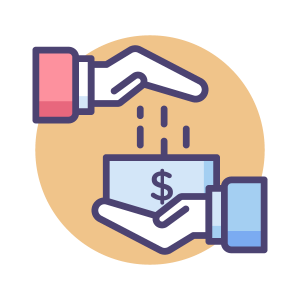Writing stellar grant proposals is not usually an intuitive feat, but a continual process that demands patience and determination. While writers might initially find the learning curve overwhelming, the right tools can temper the initial difficulties. Management software can help nonprofits streamline the road to funding success.
Here are some tips to aid grant writers begin the process:
Identify the type of grant to seek
Corporate giving programs and foundations provide grants for two purposes: Program development and operational support. The latter applies to any expense essential in carrying out an organization’s purpose, according to the Minnesota Council on Foundations. Providers of operational grants leave spending to the discretion of the nonprofit. These funds can be used for everything from campaign publicity to purchasing office supplies for staff.
Funders give support grants with a specific program or project in mind. Generally, this money is not given without a specific outline for how it will be used and estimates of the exact cost of the project. Organizations may not use these funds for any purpose that has not been explicitly agreed-upon. A grant management database can help organize specific objectives, goals and timelines, to mitigate the risk of a request being turned down due to an unclear plan of action.
Do the research
Foundations often receive too many grant requests to give each a thorough, attentive reading. Staff are likely to devote most of their attention to personalized, specific proposals that clearly demonstrate alignment with the foundation’s values.
A generic grant proposal simply won’t do. Before investing the time to write an appeal for funding, nonprofit staff should expend some energy getting to know their prospects, according to Nonprofit Hub. Combing through social media and news articles will reveal a good amount of information: Personal interests of CEOs, philanthropic history and giving capacity are a few things that can help a grant writer determine the probability of a potential supporter saying yes to a request for funds. Fact-finding also helps answer the question of just how much money an organization should request. A prospective sponsor can’t give money that isn’t in their budget, no matter how much they’re convinced of a cause’s worth.
In addition to gathering information about a proposal letter’s audience, it never hurts to assemble writing material before the typing begins. Conducting interviews is one great way to do this, especially when it comes to dialoguing with those who know firsthand the positive impact of a nonprofit, suggested nonprofit leadership expert Lincoln Arneal. Maybe an organization’s scholarship recipient would like to talk about the first-generation college experience. Perhaps volunteers have some insights about engagement with a meaningful mission. Software tools can facilitate the organization of notes, especially when interviewing several people within a short time frame. Keeping records in a database also means easily finding the information at a later date.
Create a unique voice
Boring potential funders isn’t going to result in successfully securing support. Writers should not be afraid of personalizing their letters or including emotional appeals in their requests. After all, working towards a greater good is a personal endeavor.
Adopting a storytelling framework is one effective way to personally engage readers.This is where writers can use the narratives collected in interviews. Not only will doing so lend a unique voice to the grant letter, it will establish definitive proof of what an organization is capable of achieving. One note: Writers should take care to get written permission from interviewees before using their stories in funding proposals.
Future Lessons
Realistically, grant writers should expect more strikeouts than home runs. Being turned down is not a sign of failure but an opportunity for learning. When writing subsequent proposals, nonprofit staff can utilize software to easily access reflections on past letters.
Remember that thank you letters apply to each recipient of a grant proposal – even those who have declined to give money. Gratitude is a sure way to keep doors open.












